The Story of a Humble Snake Vine
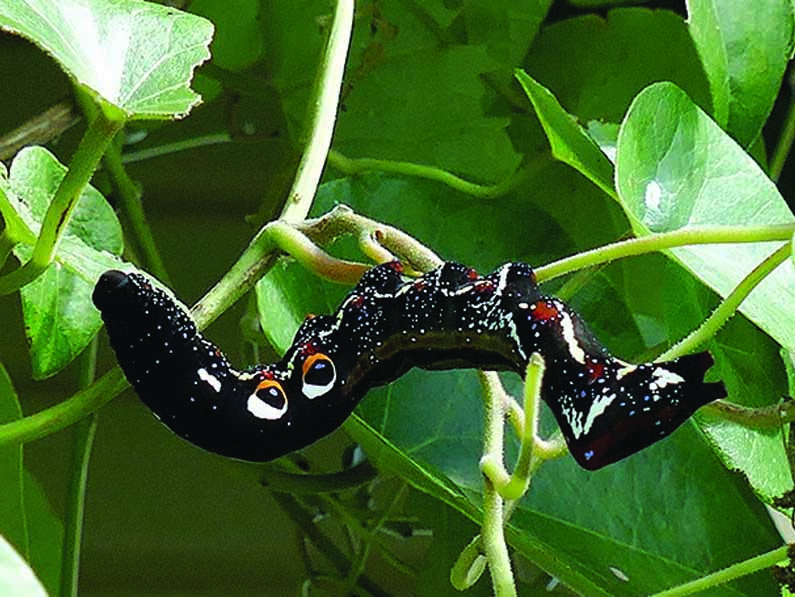
Author & Photos: Anne Windsor, Sunshine Coast Branch
Published: Journal June 2020
Image above: Caterpillar of Eudocima fullonia
It’s not the most exciting vine you’ll ever see. Mine is a female and bears inconspicuous clusters of small white flowers in spring-summer. However, she does have clusters of brightly coloured red and orange fruit, and peltate, almost heart-shaped, vibrant green leaves. And she certainly is vigorous.
I have also discovered, since the recent rain, that this vine is a host to some fascinating beasts. First are the gigantic caterpillars of the Fruitpiercing Moth, Eudocima fullonia. The caterpillars, 6cm to 9cm long, are beautifully marked, with two giant eye spots to deter predators. They are feasting in numbers on the vine right now.
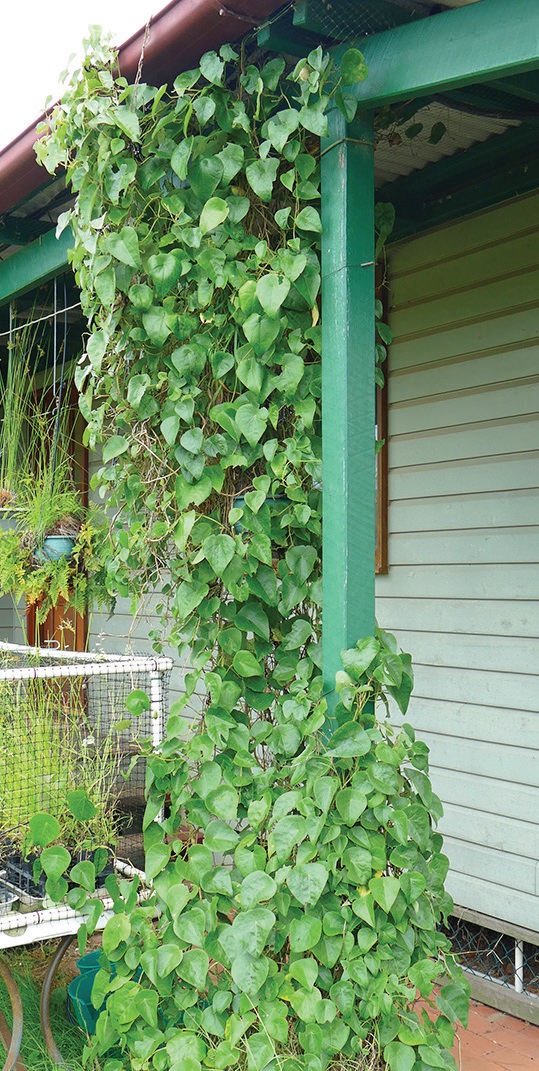
Stephania japonica Snake Vine
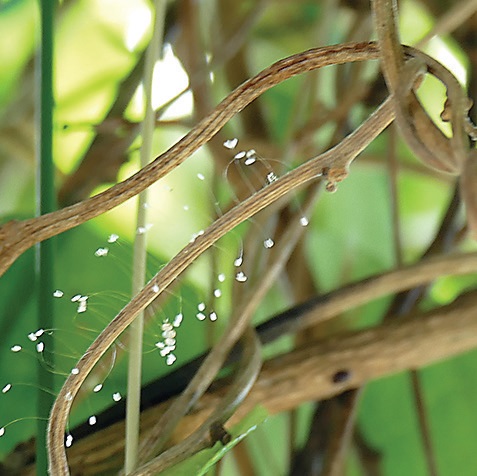
Lacewing Eggs
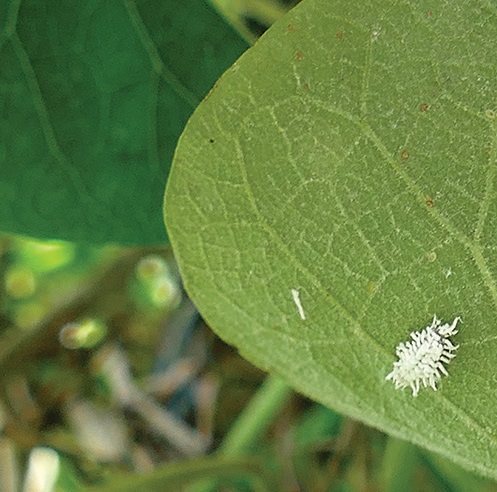
Larva of Cryptolaemus montrouzieri
The second creature living on the vine is a very weird little thing, only about 6mm long. It is the larva of Cryptolaemus montrouzieri, a beetle called the Mealybug Destroyer. It is a member of the ladybird family. The adult is a small black beetle with a reddish-yellow head, and it is so good at destroying mealybugs that it was imported into the USA to defend their citrus crops.
As if that wasn’t enough hospitality provided by the vine, I also spotted a Praying Mantis egg case, and a clutch of Lacewing eggs.
Snake Vine, what a useful plant. You’re not so humble any more!
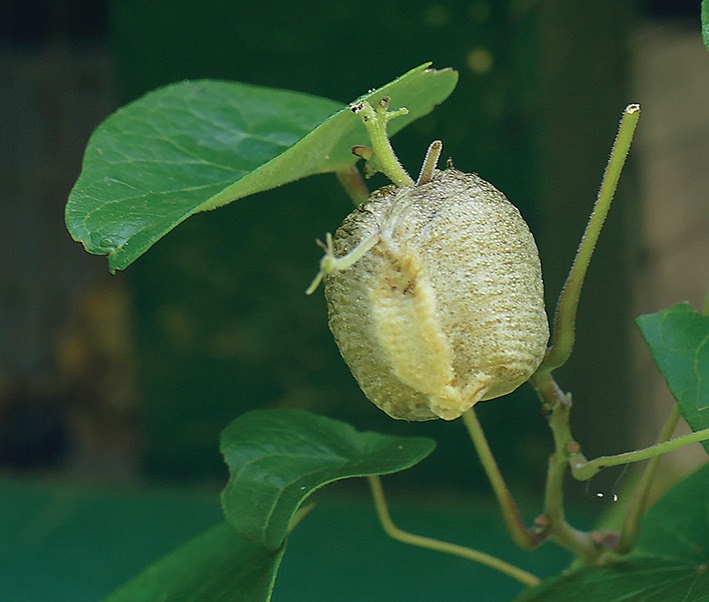
Praying Mantis Egg Case
A humble Snake Vine Part 2
It is just over three weeks since I first noticed the caterpillars on the Snake Vine, and here is how the vine is looking now. Since then, the owner of the egg case has revealed herself to be a Large Brown Mantid (definitely not the most exciting common name) Archimantis latistyla.
The Fruit-piercing Moth caterpillars have been feasting, and there is hardly one intact leaf left. This is awkward, because now they need the vine foliage to construct their ‘pupal shelters’. There are some shelters which are almost completely closed (for the very ‘private’ pupae) and others that are much more open (for the ‘casual’ pupae). As for the pupa itself, a large, black jellybean would be a fair description.
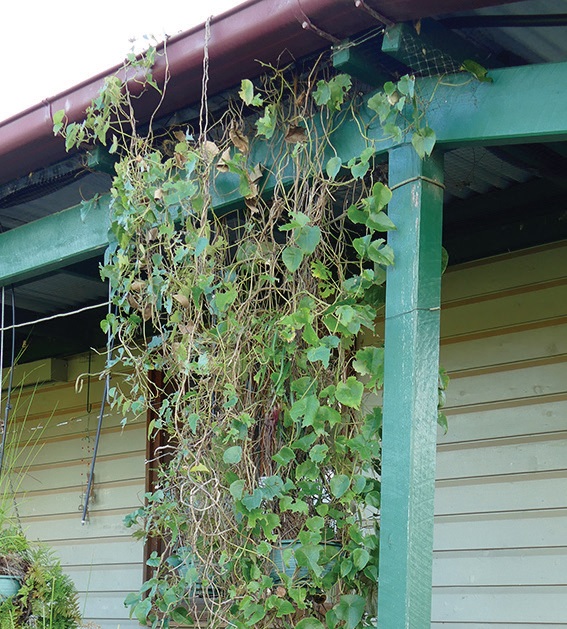
Vine after caterpillars
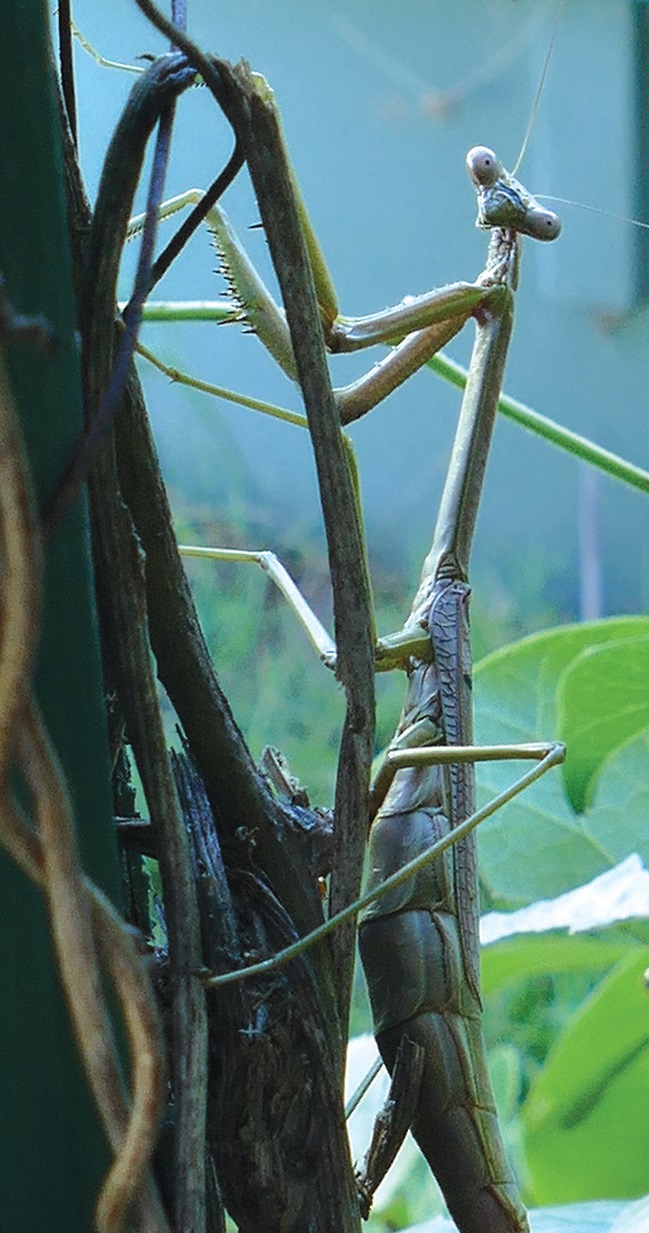
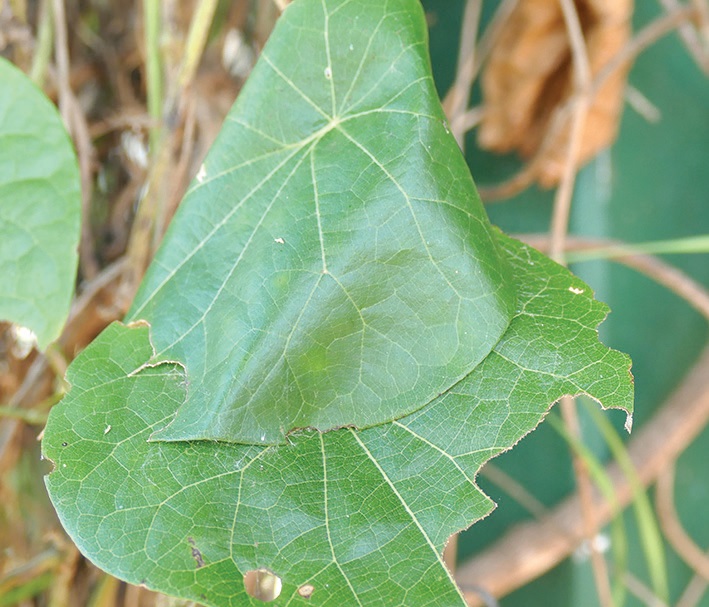
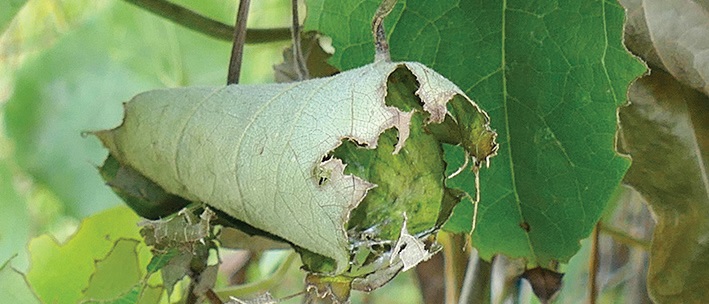
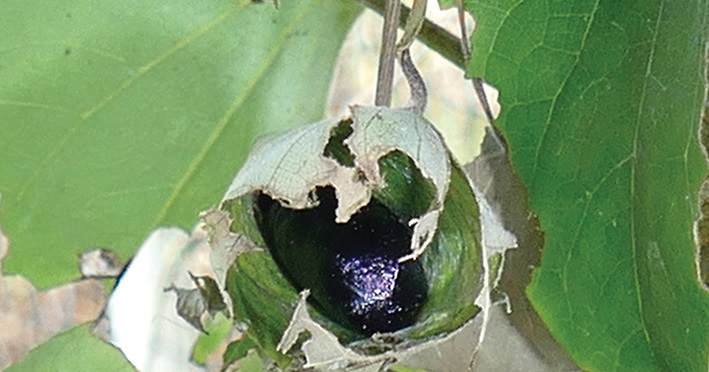
Onward to the final stage of metamorphosis, and well-earned rest and recovery for my not-so-humble Snake Vine!
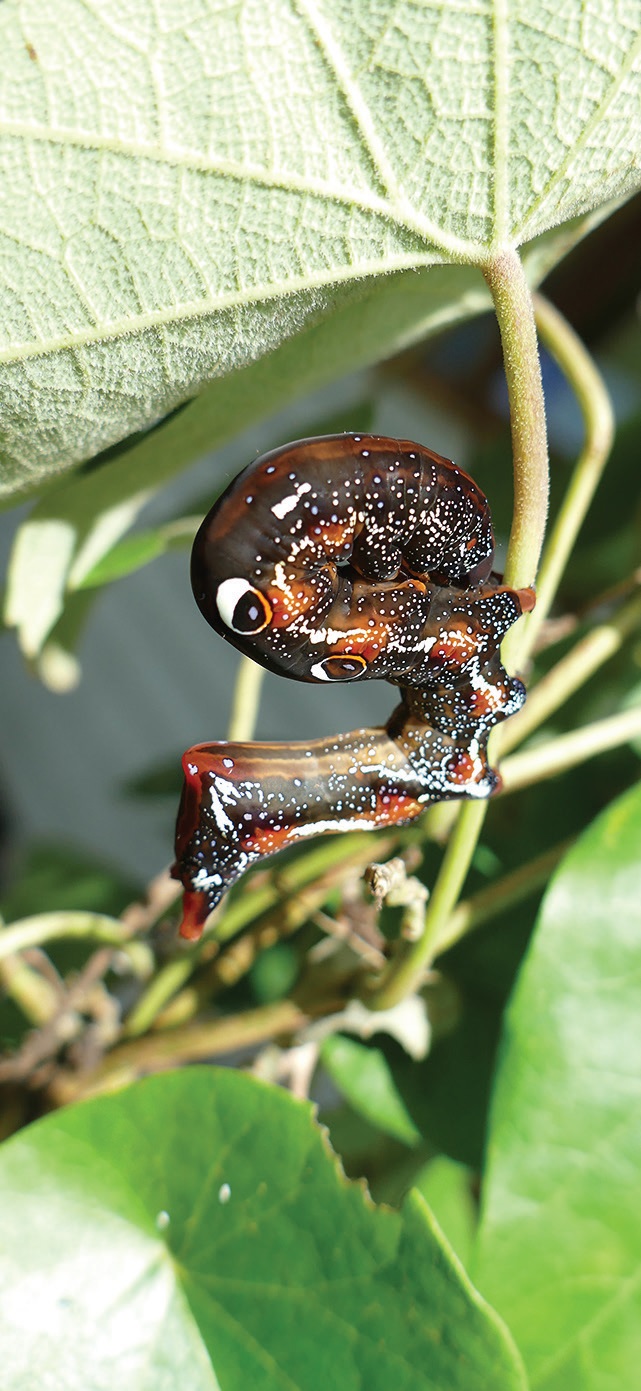
Defensive posture of the Fruit-piercing Moth caterpillar
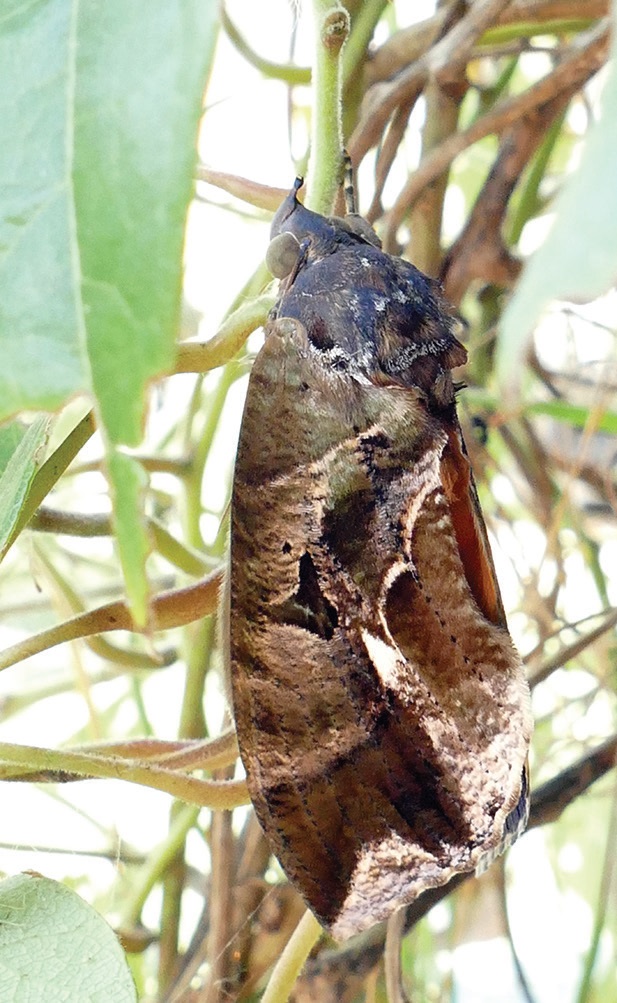
A humble Snake Vine Part 3
The adult has emerged.
Postscript: Since discovering the Fruit-piercing Moth caterpillars on my Snake Vine, all the reading I have done about them says only how much damage the adult moths cause to orchard crops, and how to kill them. I have been unable to find anything that mentions what their food choices and ecological role here would have been long before there were orchard crops to feed on…
